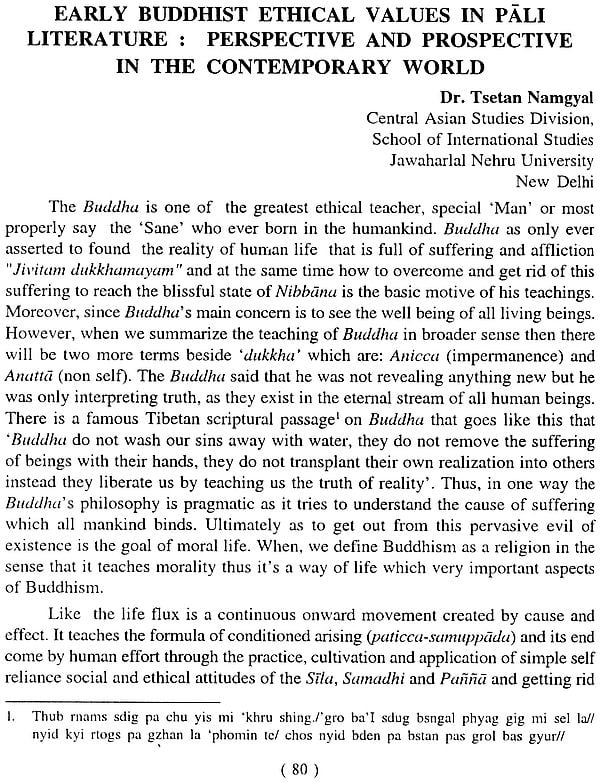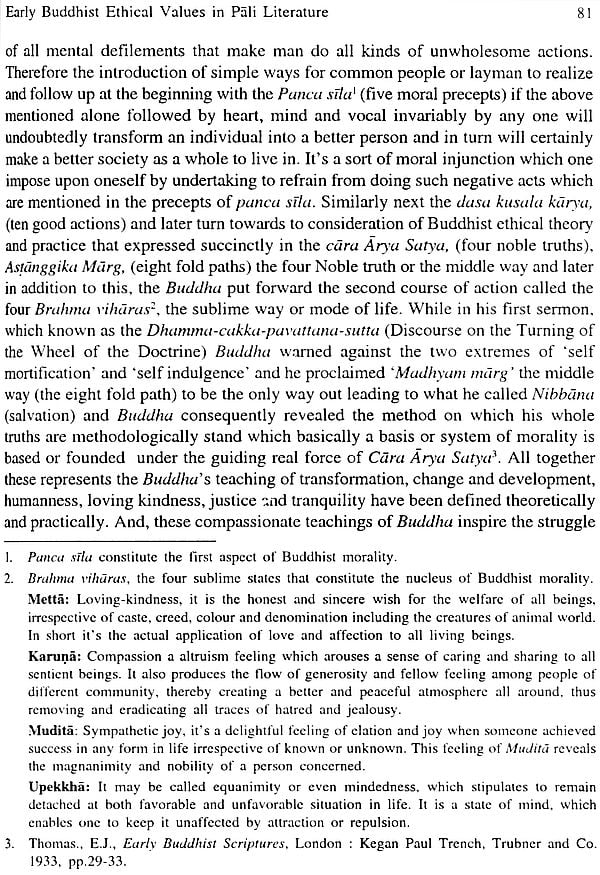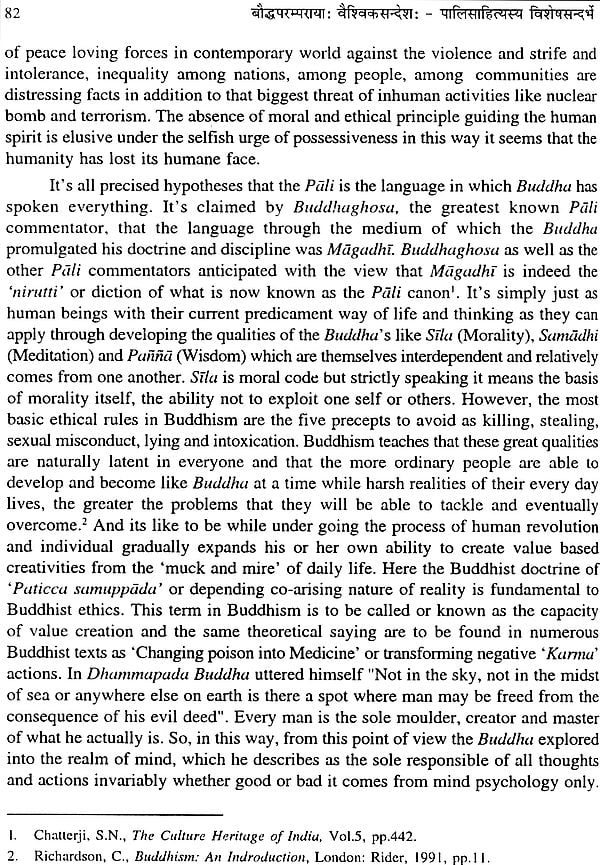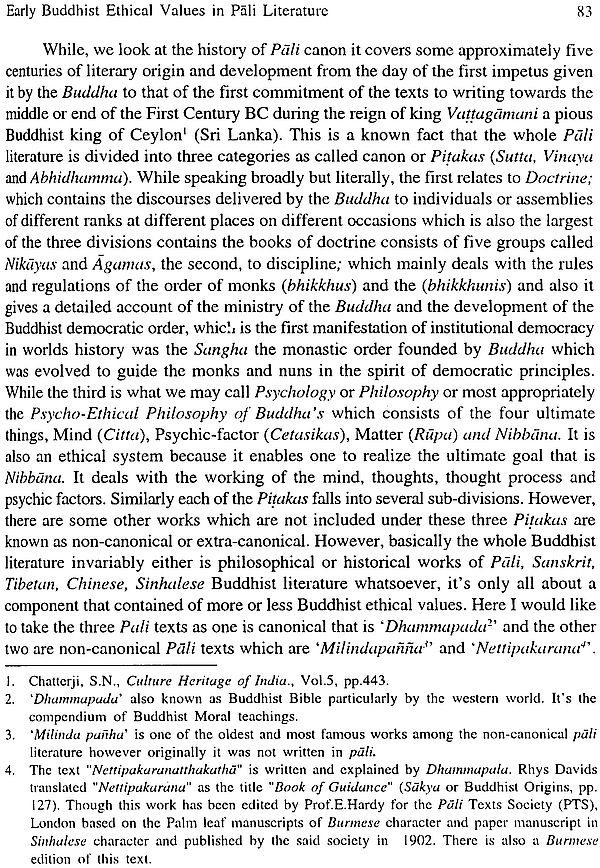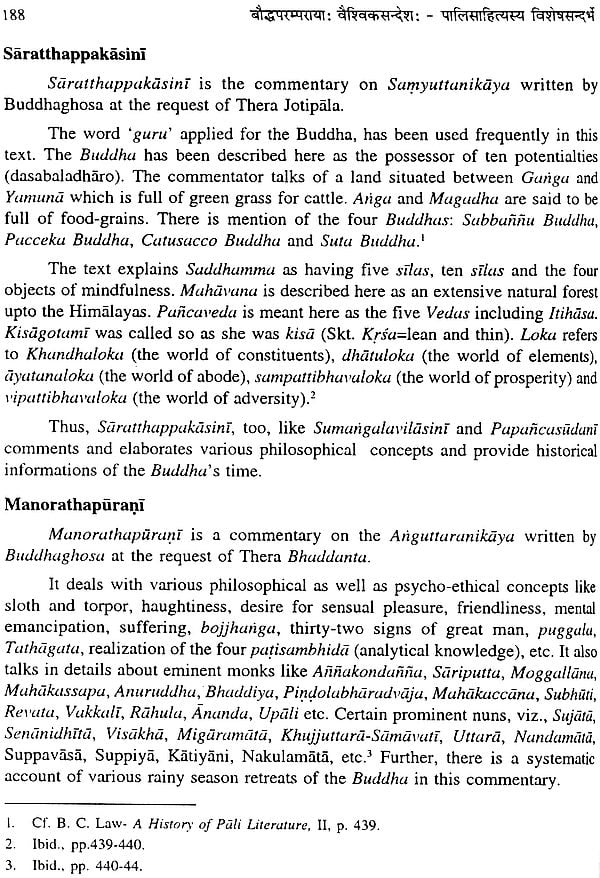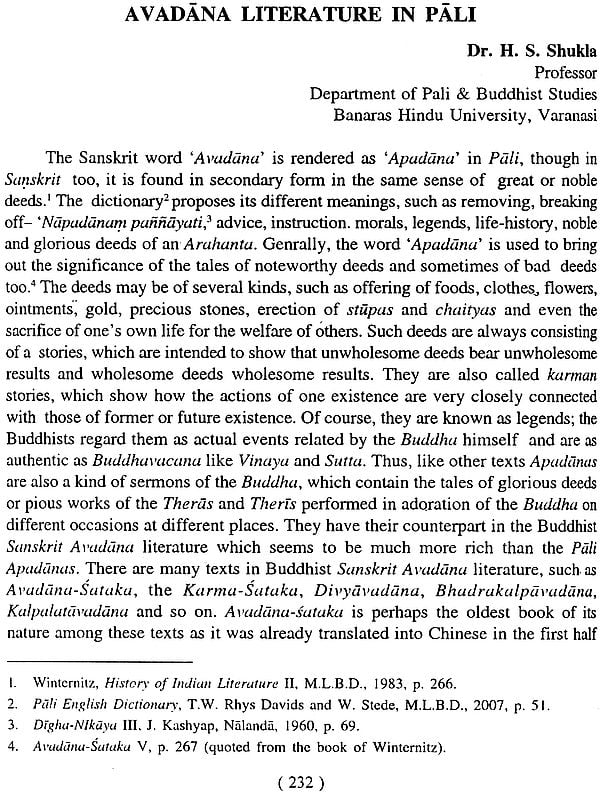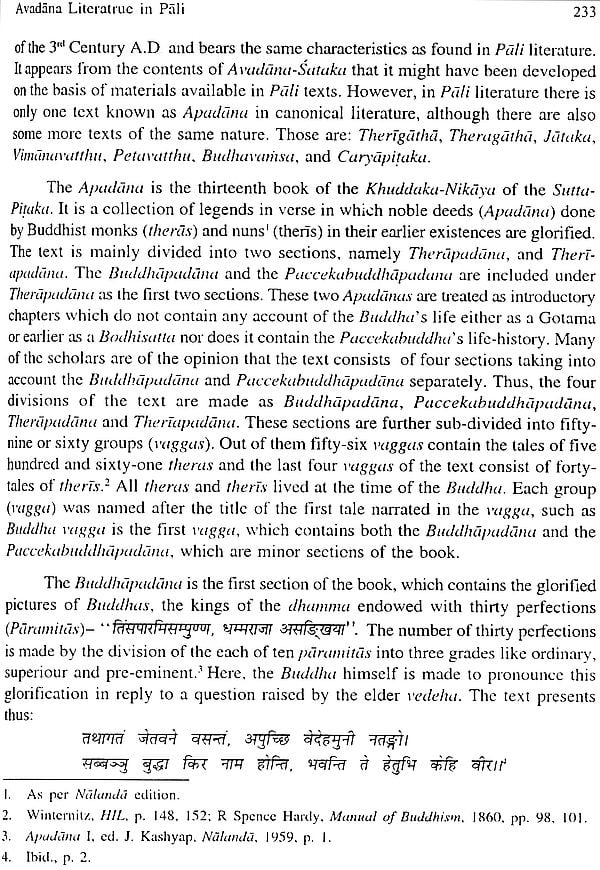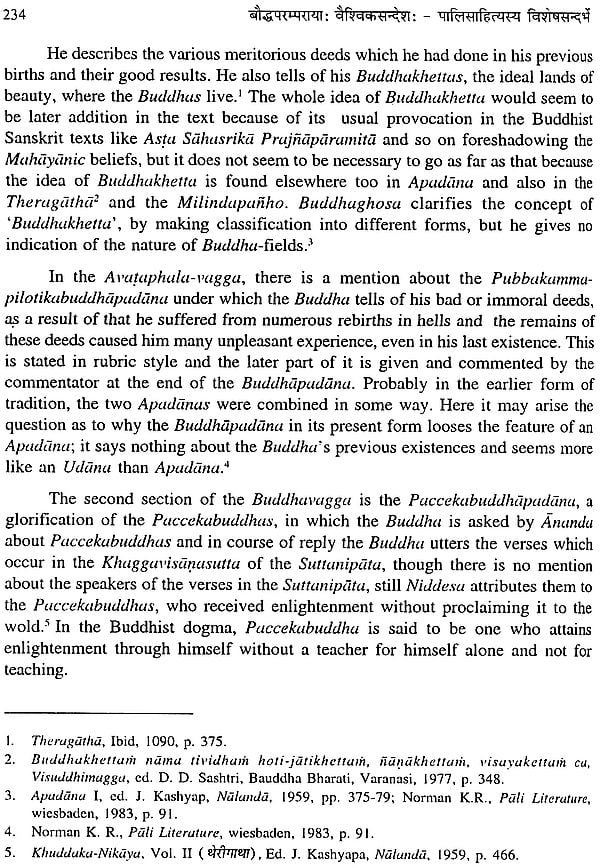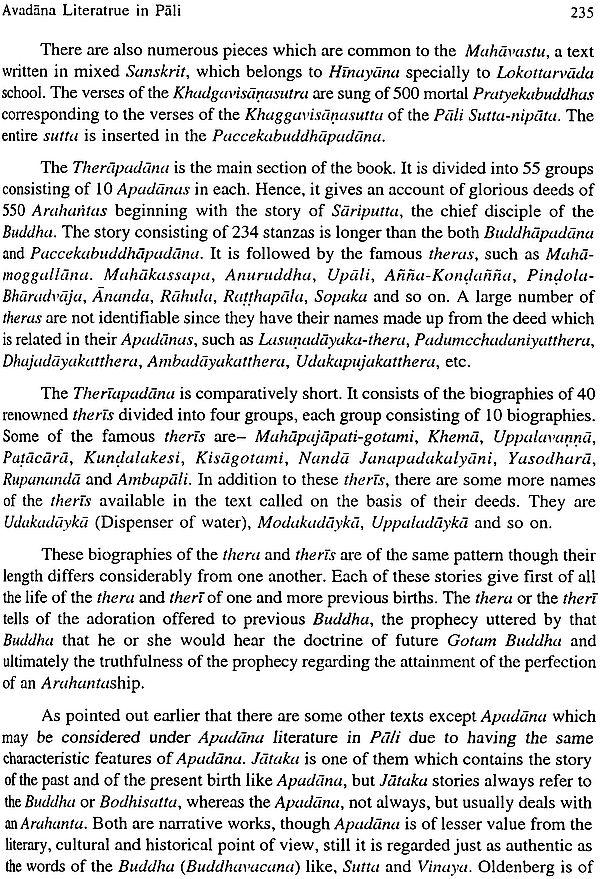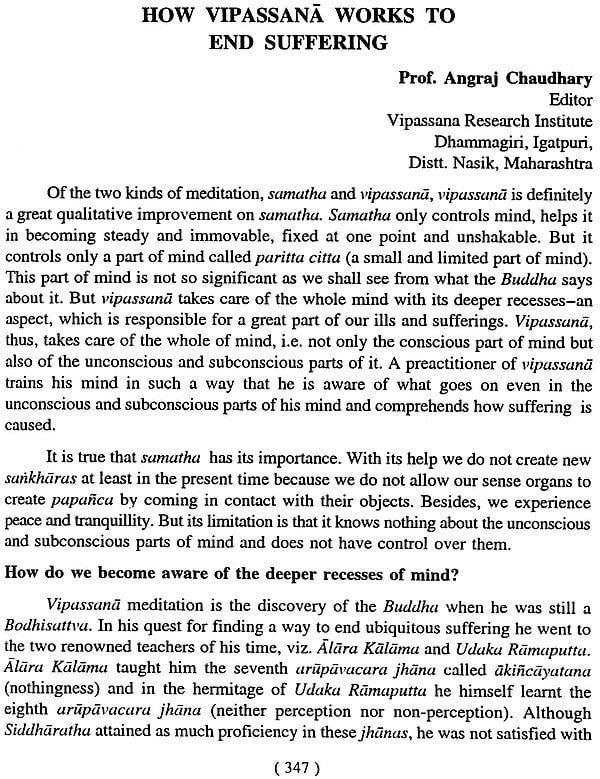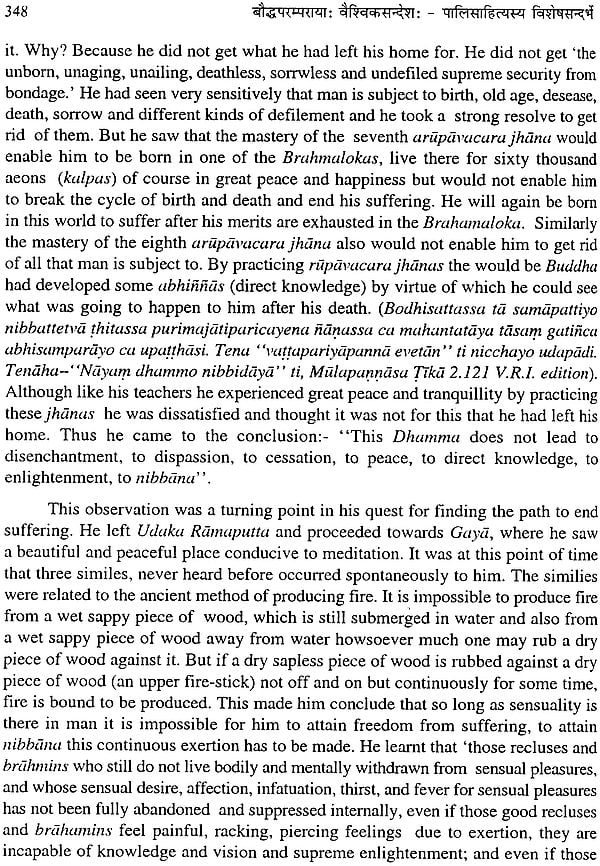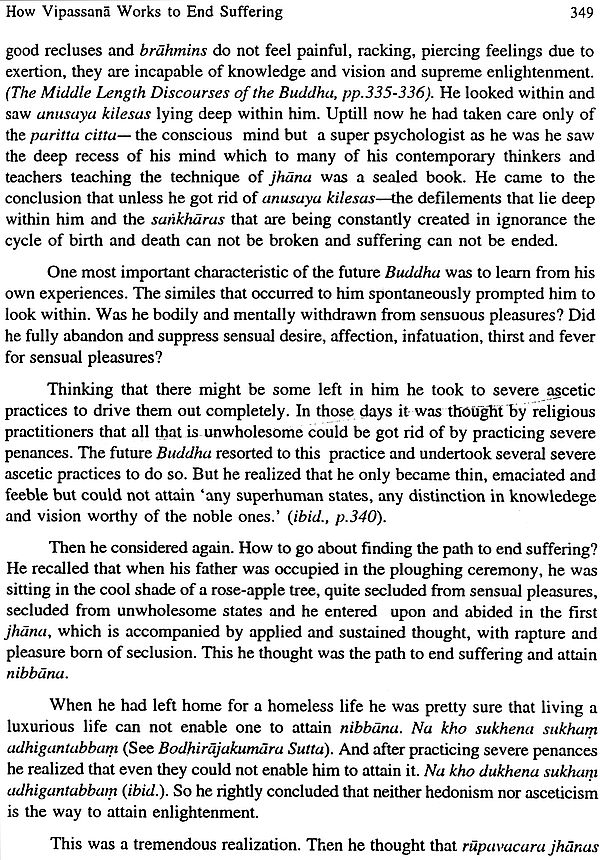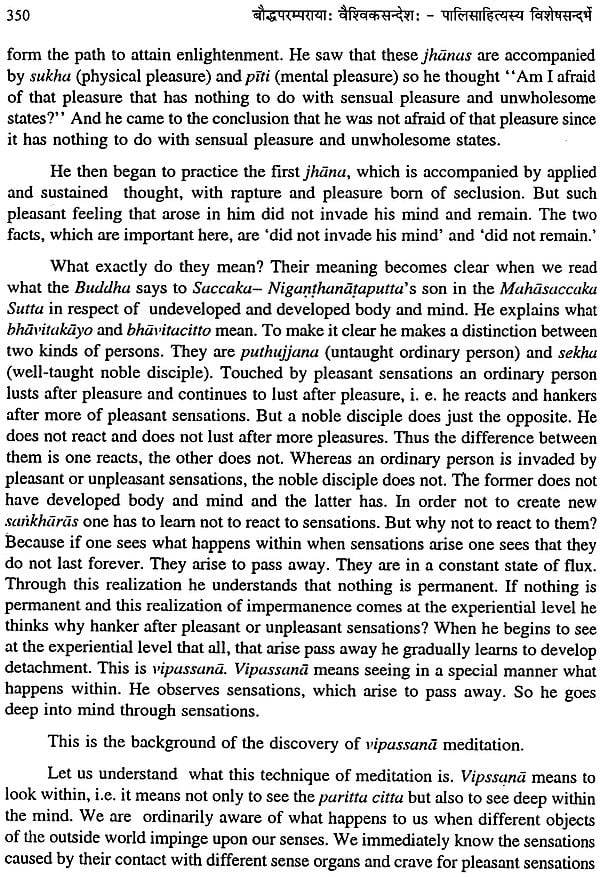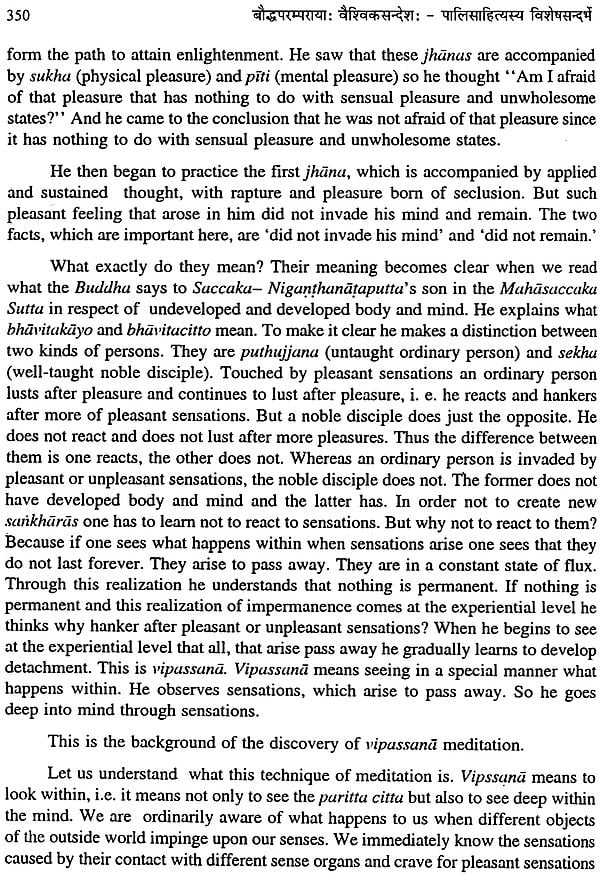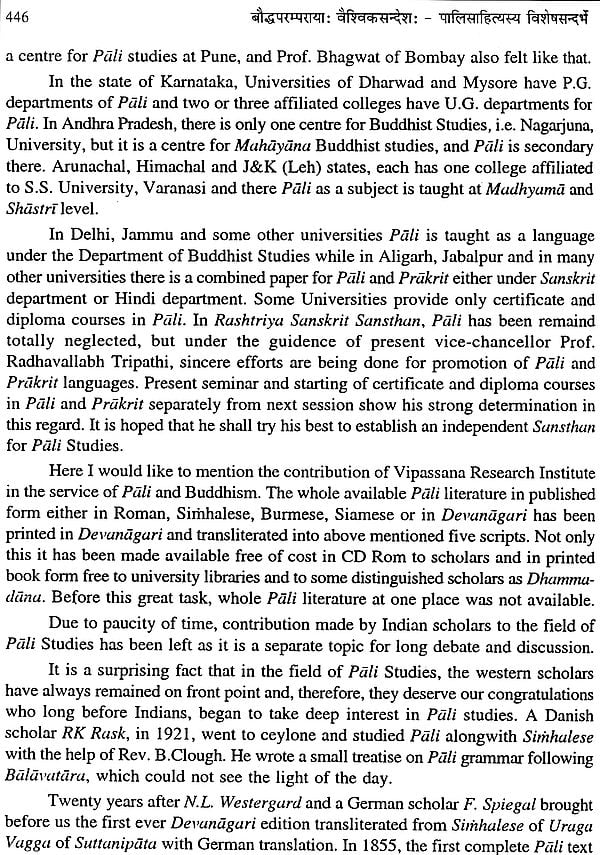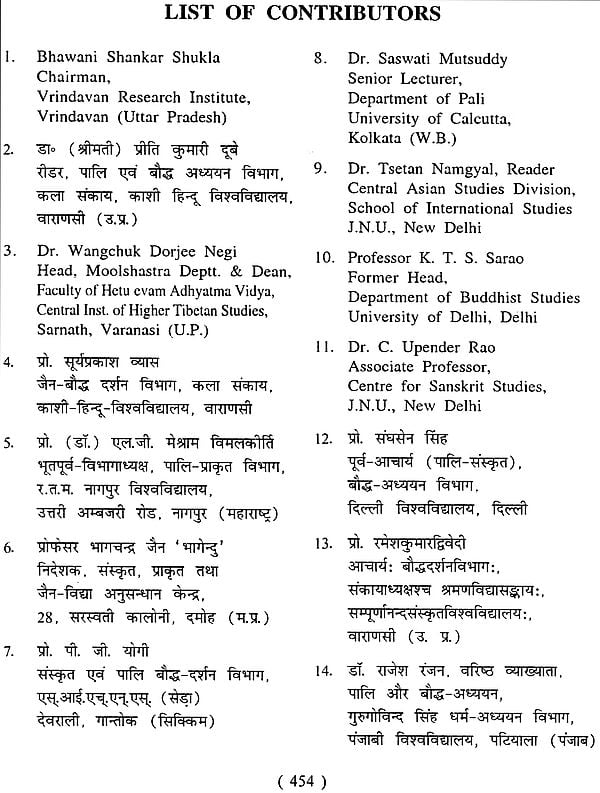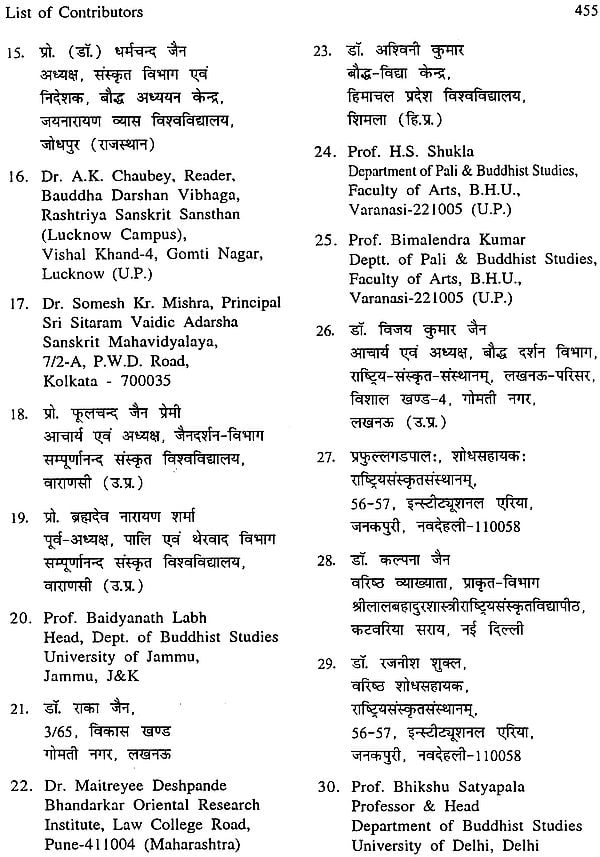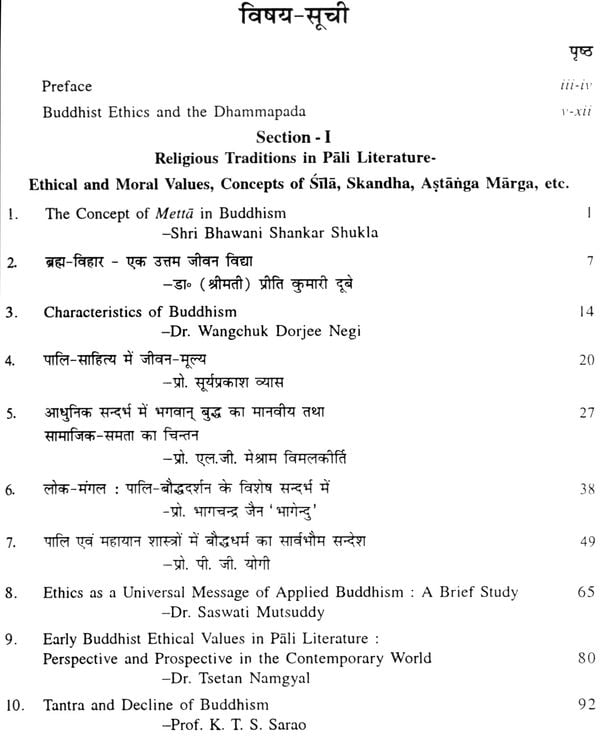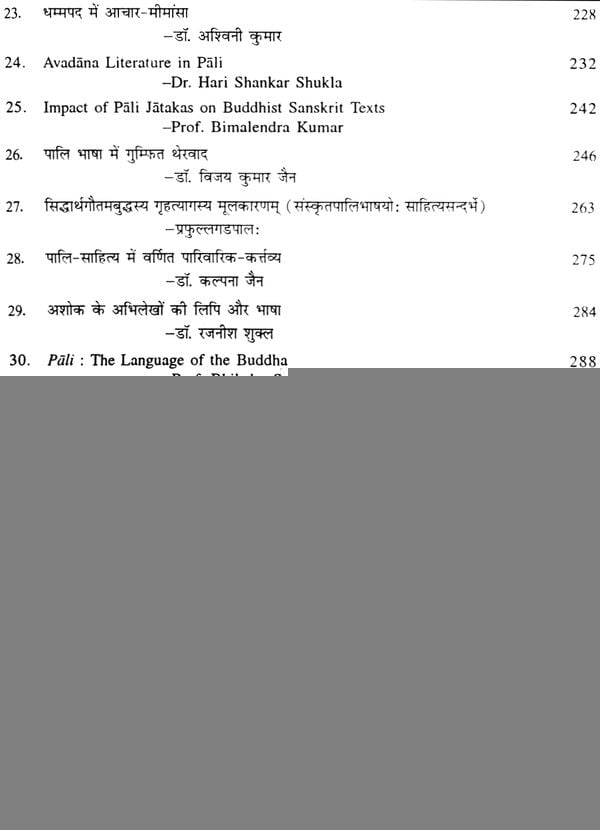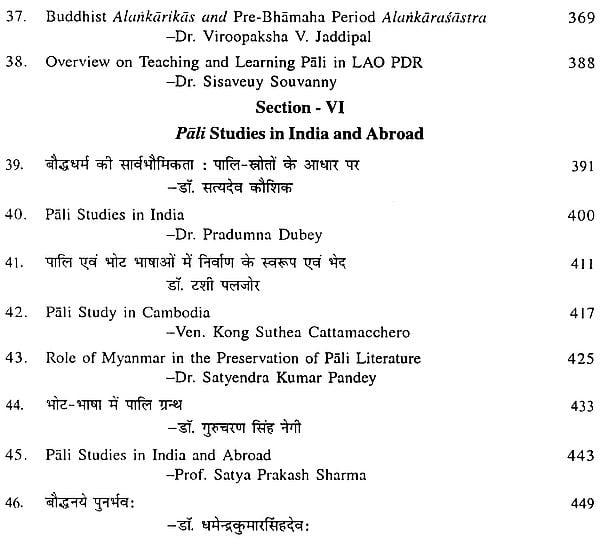
Universal Message of Buddhist Tradition (With Special Reference to Pali Literature)
Book Specification
| Item Code: | NAL389 |
| Author: | Prof. Radhavallabha Tripathi |
| Publisher: | Rashtriya Sanskrit Sansthan, Janakpuri |
| Language: | Hindi and English |
| ISBN: | 9788186111369 |
| Pages: | 473 |
| Cover: | Hardcover |
| Other Details | 10.0 inch X 7.5 inch |
| Weight | 1 kg |
Book Description
Pali is said to have been the language in which Buddha delivered his sermons showing the only possible way to the humanity at large to free itself from the shackles of sorrow. Tripitakas are universally acknowledged as the most authentic source books of Buddha's sermons. Around the nucleus of Tripitakas , a vast mass of valuable literature in Pali in the form of various Jataka and Avadana tales, Atthakathas, Vamsa, etc. grew up in the first millennium after Christ. With these, Pali literature really became a repository of Indian culture and religious as well as philosophical traditions. Study of Pali language and literature will definitely create a better understanding of religious, philosophical, literary and aesthetic traditions that have enriched world cultrue. Ministry of H.R.D., GOI has taken up special effort for promotion of the study of Pali language and literature through Rashtriya Sanskrit Sansthan. From the year 2008-09, the GOI entrusted the Sansthan with scheme for promotion of Pali and Prakrit languages also. By organising the International Conference, Rashtriya Sanskrit Sansthan has just made a very modest begining in the direction of promoting Pali studies in India. The Conference was held on 22-24 September 2009 at New Delhi on the Topic Universal Message of Buddhist Tradition (with special reference to Pali literature). Besides scholars from India, countries like Thailand, Cambodia, LAO PDR were represented in this seminar.
There is an incidence narrated in Pali Mahavagga of Yinuyapituku about a discourse that Buddha gave on meditation and transcendence of suffering. "Suffering is only one face of life' '- he said- "life has another face - the face of wonder. If we can see that face of life, we will have happiness, peace and joy. When our hearts are unfettered, we can make direct contacts with wonders of life. When we have truly grasped the truths of impermanence, emptiness of self and dependent co-arising, we can see how wondrous our own hearts and minds are."
With this simplicity that reveals his insight into the mysteries of life and creation, Buddha delivered his discourses more than two thousand and five hundred years ago in India. The unique nature of his discourses lies in presenting the logistic view of life and putting up its whole complexity in simplest of terms. His sayings are marked with a genuine concern for the sufferings of humanity and with a resolve to find out remedial measures. Who else, but Buddha, could have presented the four noble truths of life in this way - that there is suffering, suffering has its cause, suffering could be put to cessation and there is a path for the cessation of suffering. It was again Buddha who designed the eightfold path for putting the suffering to cessation - viz. - Right vision, Right resolution, Right speech, Right effort, Right livelihood, Right conduct, Right mindfulness and Right meditation.
Pali is said to have been the language in which Siddhartha Gautama after becoming the Buddha, delivered his sermons showing the only possible way to the humanity at large to free itself from the shackles of sorrow. The discourses of Buddha were latter collected in Tripitakas.
Tripitakas are universally acknowledged as the most authentic source books of Buddha's sermons. The name Tripitaka is said to have been given to these holy books as originally they were kept in three pitakas or boxes for preservation. Around the nucleus of Tripitakas, a vast mass of valuable literature in Pali in the form of various Jataka and Avadana tales, Atthakathas, Vamsa, etc. grew up in the first millennium after Christ. With these, Pali literature really became a repository of Indian culture and religious as well as philosophical traditions.
Study of Pali language and literature will definitely create a better understanding of religious, philosophical, literary and aesthetic traditions that have enriched world cultrue. The Official language Commission constituted by the Government of India in 1955 had emphasised the need to encourage the studies of Sanskrit, Pali and Apabhramsha languages, accepting the linkage between these and Indian vernaculars. Ministry of Human Resource Development, The Govt. of India has taken up special effort for promotion of the study of Pali language and literature through Rashtriya Sanskrit Sansthan.
Rashtriya Sanskrit Sansthan is a premier Institution established by the Government of India for promoting Sanskrit Education in our country. From the year 2008-09, the GOI entrusted the Sansthan with scheme for promotion of Pali and Prakrit languages also. By organising this seminar, we have just made a very modest begining in the direction of promoting Pali studies in India. Besides scholars from India, countries like Thailand, Cambodia, Laos and Srilanka were represented in this seminar.
The valuable contributions of pioneer scholars like Professor Max Muller, T.W. Rhys Davids, Mrs. C.A.F. Rhys Davids and Dr. Pischel in the field of Pali studies have made a diaspora like this possible today. It was Professor Max Muller who brought out some of the basic texts from Pali canons under the prestigious series the "Secred Books of The East". His editions and translations of Pali texts are still being used by us. T.W. Rhys Davids, the founder of Pali Text Society, and Mrs. C.A.F. Rhys Davids published the Tripitakas of Pali with English translations.Dr. Pischel presented his editions of texts like Therigatha. Amongst the Indian scholars the contributions of Prof. Satishchandra Vidyabhushan, R.D. Bhandarkar, Rahul Sankrityayana, P.C. Baghchi, Dharmanand Kosambi, Bhikkhu Jagadish Kashyap, Bhadanta Anand Kausalyayana, Dwarika Prasad Shastri, Bhikshu Dharrnarakshit, Mahesh Tiwari have gone a long way with us. It is because of the sound foundations laid by such scholars in the field of Pali studies that the efflorescence vibrates with immense possibilities today.
I am grateful to all the officers in MHRD, GOI who have been very considerate and have encouraged various activities of Rashtriya Sanskrit Sansthan.
